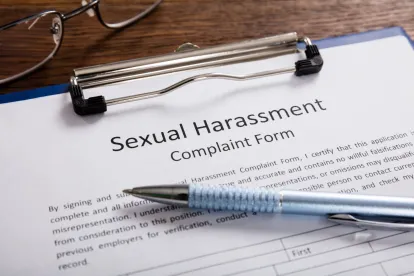At long last, the Department of Education has issued final regulations to explain what steps colleges and universities must take to address sexual harassment and assault on campus. The regulations follow years of criticism of the Department’s old guidance, which many thought disadvantaged students accused of sexual misconduct. The final regulations follow a lengthy notice-and-comment period, which saw the public submit over 124,000 comments. The Department’s final rules address many of those comments and represent the first formal rules on Title IX since 1997. Colleges and universities must adapt their policies and implement the regulations by Aug. 14, 2020.
The final regulations largely track the proposed regulations, but the Department issued a 2300-page response to comments it received. This will take some time to digest, but here are some high-level thoughts on the regulations’ major changes from the Obama-era guidance:
-
The definition of “sexual harassment” is now narrower. The Department divided the definition into three categories: (1) quid pro quo harassment, (2) sexual assault, and (3) unwelcome conduct that is so severe, pervasive, and objectively offensive that it effectively denies a person equal educational access. The first category covers harassment where there is an exchange for sexual contact. The second now makes clear that stalking, domestic violence and dating violence are now officially considered examples of sexual harassment under Title IX. The third category narrows previous guidance. Prior guidance said that conduct that was severe or pervasive violated Title IX, which was the Supreme Court’s standard under Title VII for workplace harassment. The Department explains that the new standard—severe and pervasive—aligns with the Supreme Court’s Title IX specific guidance that balances Title IX concerns with the First Amendment. Notably, reports of sexual assault, dating violence, domestic violence, and stalking do not need to meet the description of “severe, pervasive, and objectively offensive.”
-
The new regulations explain how a school must respond to Title IX sexual harassment in a manner that is not deliberately indifferent. Among other things, the school must offer support measures, promptly contact the complainant and explain the support measures and the complaint process, follow a grievance process, and investigate any allegations in a formal complaint. Notably, if a complainant asks the school not to investigate, the school must respect those wishes unless it is “clearly unreasonable” to do so.
-
The “single investigator model” is now dead. Under the old guidance, many colleges had one official investigate, adjudicate, and issue sanctions. Now three officials are needed for the complaint process: The Title IX coordinator, who manages and receives complaints, an investigator who interviews witnesses and gathers facts, and a decision maker who determines sanctions and remedies.
-
The Department changed the process for receiving complaints. The old guidance said a school was on notice of sexual harassment whenever there was a report to any school employee who did not have a separate obligation to maintain confidentiality, like a psychologist or victim advocate. The new rules state that institutions of higher education do not have “actual knowledge” until the Title IX coordinator or an official with authority to institute corrective measures has knowledge.
-
During investigations, the school bears the burden of proof and the burden of production. In other words, the school is obligated to gather evidence and must provide an equal opportunity for the parties to present and review evidence. There cannot be any “gag orders” on the parties’ right to discuss the investigation. There are notice requirements, as well as instructions on the minimum amount of time parties will have to inspect evidence, review reports, and respond to findings.
-
Hearings at colleges and universities must be live, and each party’s advisor must have the chance to cross-examine the other party and any witnesses. The examination must be direct, oral, and in real time. The parties themselves are not allowed to perform the cross-examination, and if they don’t have or opt not to retain their own advisor, the school must supply one. The hearing officers can limit the scope of the cross-examination to questions that are “relevant,” but must explain to the party’s advisor why a certain question is not relevant. Cross-examination cannot include questions about a complainant’s prior sexual behavior unless offered to prove someone other than the respondent committed the alleged misconduct or to prove consent. If a party refuses to submit to cross-examination, the hearing officer cannot rely on any of that party’s statements in reaching the determination of responsibility. However, the hearing officer cannot draw an adverse inference based on absence from the hearing or refusal to submit to cross-examination. Schools must create an audio or video recording or a transcript of any live hearing.
-
The decision after the hearing can be reached using either the preponderance of the evidence standard or the clear and convincing evidence standard. The school must apply the same standard of evidence for all formal complaints of sexual harassment, whether the respondent is a student or an employee (including faculty member).
As noted above, the 2300-page document will take some time to sift through, and we will provide more guidance shortly. Several questions are already popping up about the scope of the regulations, and schools are best advised to review the regulations with counsel to ensure they meet the August 14 deadline.






 />i
/>i

